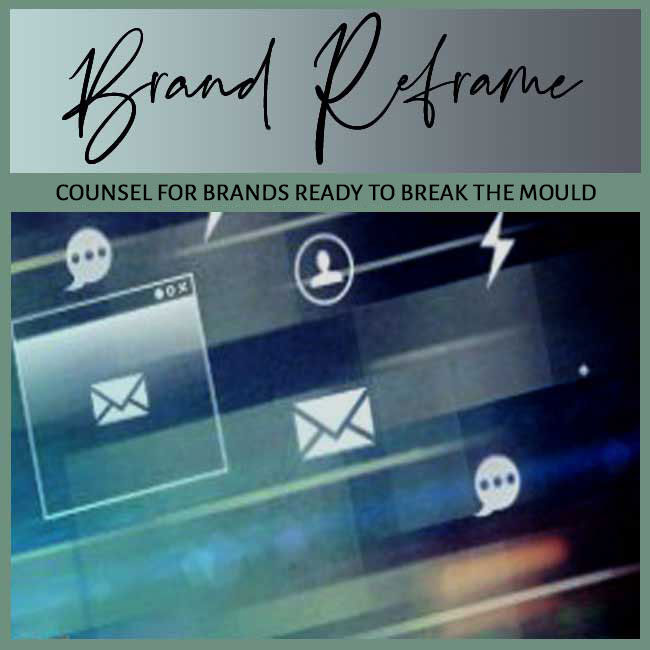
FOCUS: BRAND RELEVANCE LOSS | AUDIENCE: STEWARDS OF PLATEAUED BRANDS
BY: SHOBHA PONNAPPA | BRAND BREAKTHROUGH STRATEGIST | 45 YEARS | 125+ CLIENTS
I answer 6 tough questions about how to regain relevance when your brand no longer feels in step with how the category is evolving.
Many founders assume that brand loyalty protects them. But loyalty isn’t immunity. As categories evolve … faster than ever now ,,, brands risk looking dated, rigid, or irrelevant, even when their product quality remains unchanged. Sticking to a familiar playbook can backfire when buyer expectations shift. In this post, I tackle six questions that reveal the dangers of holding steady while your market moves forward.
One clear sign is when newer entrants feel more aligned with what customers talk about, value, or expect … while your messaging feels frozen in time. You may still get sales, but engagement feels flatter and word-of-mouth slower. Meanwhile, competitor narratives seem fresher, more attuned to today’s sentiments, and more memorable.
Another clue is when your differentiators start to feel like standard features. What once made your brand distinct is now category hygiene. If customers are no longer surprised, delighted, or intrigued by your promise, chances are the category has moved … and your brand hasn’t moved with it.
Category change often creeps in subtly. It rarely announces itself with a bang. You might have been focused on operations, fulfilment, or legacy relationships … while the conversation outside changed. Competitors may have repositioned the entire game without needing to outsell you … just by outframing you.
It’s also easy to believe that product quality will carry you through. But in evolving markets, perception leads preference. Even brilliant products lose traction if the brand framing around them feels dated, unrelatable, or off-mark.
The first step is not panic … it’s pattern recognition. Study the newer narratives, emerging behaviours, and rising voices. Then ask: What assumptions is my brand still making? What beliefs are we still clinging to? Often, brand stagnation comes from strategic inertia, not bad intent.
Next, reassess your category map. Draw it anew. See who the real competitors are now … not just by size, but by story. You may find that your rivals are no longer who they once were. Understanding this helps you reposition with relevance, not just nostalgia.
Not at all. Relevance is not reinvention—it’s recalibration. Often, the core of what makes your brand valuable remains intact. What’s needed is a fresh outer narrative that makes your inner value feel newly urgent. This could be a shift in tone, message, visuals, or audience focus.
Sometimes a single sharp reframe … like turning your solution from “affordable” to “empowering” or from “traditional” to “timeless” … can change how the market sees you, without changing your DNA. The key is to listen hard, then express clearly.
Content is often the first place relevance gets lost … and the fastest place to regain it. Your blog, site copy, emails, and social posts reveal the era your brand is living in. If you’re still talking like it’s 2017, customers won’t believe you’re built for 2025. Outdated language, formats, and rhythms betray an outdated mindset.
Strategic content doesn’t just describe your offer … it interprets the category for your audience. It helps them see why you matter now, in this new context. Done well, content repositions not just your brand, but the way customers think about the problem.
The answer lies in building relevance routines … not just brand assets. Make category scanning a monthly ritual. Talk to outsiders regularly. Listen to how your customers describe you, not how you describe yourself. The brands that stay relevant don’t chase trends … they spot shifts early and respond with conviction.
Also, invest in elasticity. Don’t overcommit to a single story, format, or voice. Brands that can stretch … without snapping … are the ones that evolve gracefully when the market does.
If these questions ring uncomfortably true, your brand might be steady … but standing still. Relevance loss is rarely about product weakness … it’s about story weakness. But stories can change. With the right strategic insight, your brand can re-enter the conversation, renewed and compelling.
If you’re an investor seeking momentum for your portfolio brands, this FAQ Insight Post I wrote could interest you: “FAQs: When Founders Chase Metrics That Don’t Drive Momentum.“
And if you’re a solo expert looking to sharpen traction, this FAQ Insight Post I worked on may resonate: “FAQs: Why Algorithm Changes Keep Burying Your Best Content.“

"One BIG IDEA can turn brand stagnation into unstoppable movement. Spots are limited each week ... book your breakthrough session now."
Shobha Ponnappa
More Breakthrough Ideas … Case Studies & FAQs … from the Brand Relevance Loss Category
Case Studies
FAQ Insights
Smart insights, real-world frameworks, and idea-driven clarity – designed to help brands move.
Get my fortnightly Brand Reframe newsletter. Smart insights, distilled thinking, and focused momentum to help your brand lead.

Get my free AI strategy guide. Smart prompts, sharper briefs, and practical ways to make AI support your brand momentum.

Just fill in the form to join. Get my newsletter and the guide shown alongside, all with several game-changing tips.